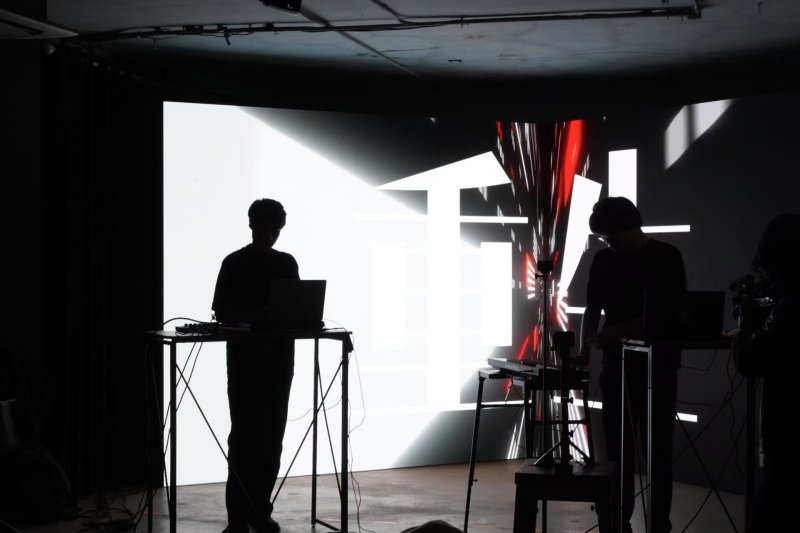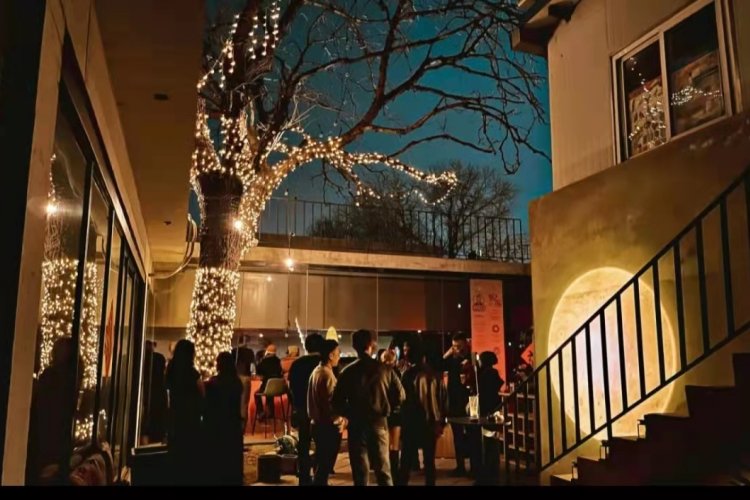Aotu Space Owner Ray Wu Talks Closure and What's Next for Aotu
Over a decade ago, we introduced our readers to a new spot in town: Aotu Space, located at 67 Beixinqiao Toutiao and operating as an experimental art space. Ray Wu was the founder, and in its early days, Spanish native Pilar Escuder was in charge of curating the venue's art program. At the time, she was also working as an artist herself, looking for a place to showcase her own work alongside fellow designers. This creative hub quickly became a convergence point within Beijing's multidisciplinary microcosmos, attracting a diverse and vibrant crowd.
My memories of the space are filled with a series of art exhibitions, performances, screenings, and markets – even a launch event for Spittoon Literary Magazine. Beyond the art, you could always count on enjoying a delicious gin and tonic at Aotu. On sultry summer nights, you'd find yourself on the rooftop, sitting around Aotu's Chinese toon tree, soaking in the laid-back charm of Beijing's hutongs within the Second Ring Road.
Alas, nothing golden can stay. On Mar 30, Aotu said goodbye “with a heavy heart” to Beixinqiao, setting out on a new, liminal chapter. Indeed, Wu and his crew have temporarily lost their physical space, but they're not ready to call it quits. Instead, they're presently looking for new spaces to keep their spirit strong.

I don't doubt that new spaces will open their doors in Beijing. That being said, we keep losing places that championed independent art and culture in Beijing; just last month, Dada and Fruityspace also announced their adieu. In light of this intermittent but persisting wave of closures, I strongly believe in honoring the stories of these entrepreneurs who have contributed so much to the local scene.
Ray Wu, of Aotu fame, has always struck me as a quiet, concise man. In this interview, I had the privilege to glance into his vision of the past, the present and the future of a project that has been central to his life and career in Beijing. Ray's words convey, to be sure, pride for what Aotu has accomplished. But what fascinated me most was his disarming honesty and clarity of mind on art – a matter so deceivingly abstract. Sit down for a good one, dear reader. We owe it to those who shape Beijing tirelessly into the city that we love.
Hello, Ray. We're really grateful for your presence here at this transitional moment in time. Why did you decide to close doors at 67 Beixinqiao Toutiao, and what meaning, if any, do you derive from this farewell?
Hello, my pleasure. Our lease had expired, and we decided not to extend it. In terms of the meaning of that decision, it's rather simple. We need to find a new place to stay and start a new journey.

End of lease, end of an era. We've sadly heard this song before. But I would love to hear more from you on the impact that Aotu exerted on the art world and local community over the past decade. You're adamant that the spirit of the venue will carry on…
This is a very important question. It's certainly true that Aotu no longer exists in a concrete form, at least for the time being. But I find that often what truly lasts is the spirit of a place, which translates itself into networks of memories and relationships. This is particularly valid in the art world, I feel. Physical venues are ultimately transient. They rely on a spirit that can and will take roots elsewhere.
In the past decade, Aotu was primarily an incubator of ideas and connection, as well as a field for experimentation. Many young artists started here, making use of Aotu as a platform for free expression where ideas collided and cross-border cooperation took place. In our capacity as agents of the art world, we have witnessed the evolution of countless creative endeavors, practices and cultural trends. Lastly, we were also a community space for like-minded individuals to gather and build together a shared cultural identity.
More importantly, I believe we established a relationship based on trust – with both our artists and our audience. Artists saw themselves understood in the pursuit of their practice at Aotu, and our public surely came hoping to see something different within our walls. It's this kind of intangible network that carries on, bonding us all together and eventually re-emerging someplace else in more flexible and decentralized ways.

That's such a meaningful reflection. Without wanting to take away from it, I wonder if you have any updates on a new location?
We have not found a suitable location yet, and would certainly welcome any input from the community to find a space ranging between 100 and 300 square meters that would lend itself to exhibitions, salons and events. In the meantime, we're always open to collaborations with cultural institutions, brands and art space operators in town.
Hear, hear, Beijing. How do you envision the future Aotu? In which ways will it depart from the Beixinqiao chapter?
At Beixinqiao, we never wanted to be an “ivory tower.” Instead, we embedded ourselves in our surroundings. Wherever we go, we will maintain this attitude of constantly redefining our understanding of what's local. After all, art is a crucial, transformative tool to improve our urban spaces, engaging with them in meaningful and mutually beneficial ways.
Content-wise, our future space will surely place a greater emphasis on contemporary art. But I am more interested in challenging the traditional operational formats of art spaces. Aotu will continue to evolve as a “co-creation mechanism,” involving artists in all planning stages of an exhibition. Perhaps we may even have to fully commit to a mobile format rather than any specific, permanent venue. I really do believe in art being an act of social participation that enables us to interact effectively with our society and provide creative answers to otherwise uncertain times.

A challenge just as much as an opportunity. Aotu has collaborated with over a thousand artists over the past ten years. Any in particular that you'd like to highlight?
So many, simply by being transformative, integrational experiences. Our summer screenings, for instance, attracted neighbors of all ages as part of a crowd that interacted directly, without any boundaries, with our guest filmmakers. Our young artist companionship program guided emerging creatives through every step to a successful exhibition, from layout to opening, viewing and feedback. Some of these artists went on to become rather famous, and many of them just bloomed in their own unique ways. With each of them, we forged long-lasting relationships.

You did mention before a small sound art performance that stuck with you…
Oh, yes. The artist brought over a small, homemade device, and had the audience sit on the ground to embark together on an impromptu journey through sound. This was such a moving experience for all.
The way I see it, the relationship between an artist and the space that hosts them should operate as a symbiosis that proves nurturing for both. If the artist is a plant, then the space is the soil. Standing together on equal grounds, they should ideally be able to face all sorts of challenges and external pressure. Art spaces are not to judge artists, nor should artists be mere users of their hosts.

I can sense you're wanting to summarize things, in a way, to illustrate why you're not quite calling it quits with Aotu despite the present circumstances.
I think so, yes. At the end of the day, Aotu has been, to me, a lesson in being present, in listening to others, responding to their own realities and challenges. Here, art is far from being an abstract theory. It is, in fact, a concrete daily practice.
Aotu has taught me that art provides us with a viable way to coexist with issues. Art is the soil where dialogue can evolve into novel ideas. In that sense, we must remind ourselves and others that art isn't meant to cater to consumption. Art can be a slow, intentional practice with actual meaning that overcomes limited resources to reach depth and connect art with society.

And so, it can't possibly be a real farewell…
I certainly hope it won't be. At this point, when I think of Aotu, it occurs to me that we believed together in this, and together we made it happen. I rest in the confidence that this is an ongoing project, and meanwhile, I choose to root myself in gratitude. Last March, we closed the space at Beixinqiao with one last wonderful performance, and I was so moved to see so many old friends and art lovers come. So to them, once again and forever, I would like to say thank you, and see you later.
READ: June Art Roundup: 53 Exhibitions Ending This Month in 798
Images: courtesy of Ray Wu







